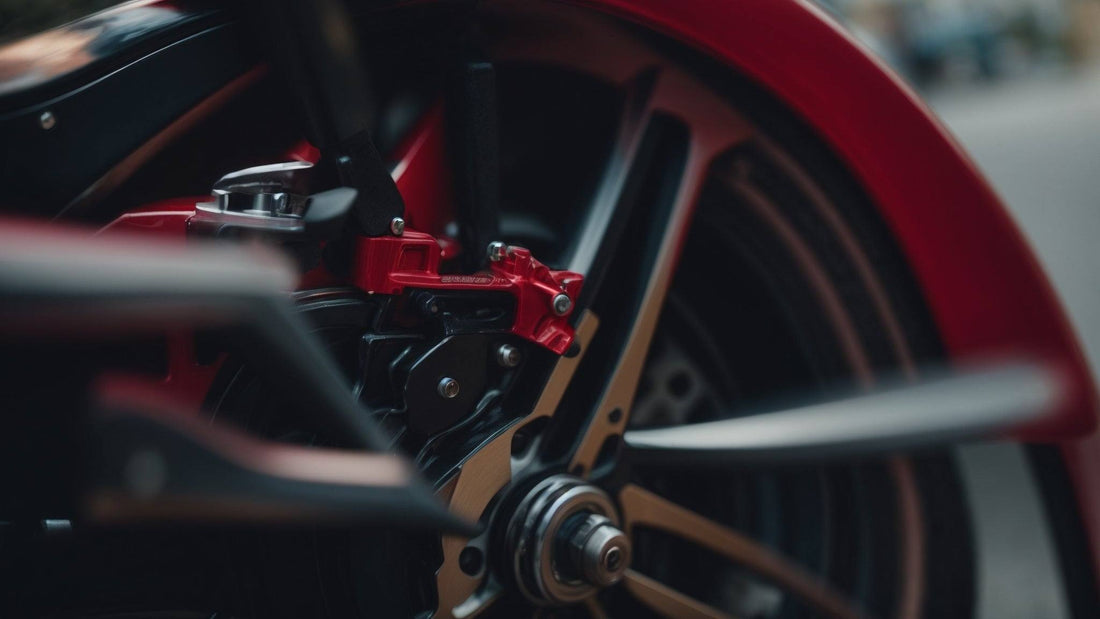
How to Bleed the Hydraulic Brakes on a Four Wheeler
Share
Bleeding a brake system isn't that difficult
Hydraulic brakes are a crucial component of any four wheeler, ensuring reliable stopping power and safety. Over time, air can enter the brake lines, causing a spongy brake pedal and reduced braking performance. Bleeding the hydraulic brakes is necessary to remove the trapped air and restore optimal brake function.
Step-by-Step Guide to Bleed Hydraulic Brakes
Follow these detailed instructions to bleed the hydraulic brakes on your four wheeler:
- Gather the necessary tools and materials: brake fluid, a wrench, a clear plastic tube, a catch container, and a helper. Having everything prepared before you start will make the process smoother.
- Locate the brake bleeder valve on each wheel. Typically, it is located at the top of the brake caliper or wheel cylinder. Refer to your four wheeler's manual if you're unsure about the exact location.
- Start with the wheel farthest from the master cylinder (usually the rear wheel). This ensures that any air bubbles trapped in the brake lines are pushed towards the master cylinder.
- Have your helper sit in the driver's seat and pump the brake pedal three to four times, then hold it down firmly. This builds pressure in the brake system.
- Loosen the bleeder valve using the wrench. As you do this, you should see a small amount of brake fluid and air bubbles coming out into the clear plastic tube. It's important to collect the fluid in a catch container to prevent any spills.
- Tighten the bleeder valve before your helper releases the brake pedal. This prevents any air from being sucked back into the brake system. Repeat this process until you no longer see air bubbles in the brake fluid. Ensure that your helper maintains a firm brake pedal during this process.
- Move on to the next wheel, working your way closer to the master cylinder. Repeat steps 4-6 for each wheel. This ensures that all the air bubbles are expelled from the entire brake system.
- Check the brake fluid level in the master cylinder periodically and top it up as needed with the appropriate brake fluid. It's crucial to maintain the correct fluid level to prevent introducing more air into the system.
- Once you have bled all the wheels, test the brakes to ensure they are firm and responsive. Take your four wheeler for a short test drive, applying the brakes gently to verify their performance. If necessary, repeat the bleeding process until the brakes feel solid.
Common Mistakes to Avoid
While bleeding hydraulic brakes may seem straightforward, there are a few common mistakes to avoid:
- Not using the correct brake fluid: Always consult your four wheeler's manual to determine the recommended brake fluid type. Using the wrong brake fluid can lead to brake system damage or failure.
- Not properly tightening the bleeder valve: Failing to tighten the bleeder valve sufficiently can result in air re-entering the brake system. Ensure the valve is tightened securely after each bleeding process.
- Allowing the master cylinder to run dry: It is crucial to periodically check the brake fluid level in the master cylinder during the bleeding process. Allowing the master cylinder to run dry can introduce more air into the system.
- Skipping the recommended bleeding sequence: The recommended bleeding sequence is typically outlined in the four wheeler's manual. Skipping this sequence can lead to incomplete air removal.
- Not properly disposing of used brake fluid: Used brake fluid should be disposed of according to local regulations. Improper disposal can harm the environment.
Conclusion
Bleeding the hydraulic brakes on a four wheeler is a vital maintenance task that should not be overlooked. By following this step-by-step guide and avoiding common mistakes, you can ensure the air is removed from the brake lines, improving brake performance and overall safety. Remember to consult your four wheeler's manual for specific instructions and always use the recommended brake fluid. If you are unsure or uncomfortable performing this task, it is always best to seek the assistance of a qualified mechanic.
